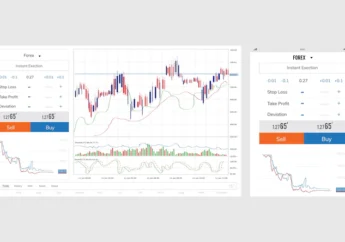The Future Of Asset Management: How Digital Currencies Are Changing The Game
by Abdul Aziz Mondal Finance Published on: 14 December 2023 Last Updated on: 08 May 2025

Asset management, a field long governed by conventional financial systems and practices, is undergoing a significant transformation. Digital currencies, once viewed as mere technological novelties, are now at the forefront of this change, redefining the principles of asset allocation and investment strategies. This shift is not just a fleeting trend; it reflects a deeper evolution in how assets are perceived, valued, and managed.
The integration of digital currencies into asset management signals a move towards more decentralized, efficient, and globally accessible financial systems. As these digital assets gain traction, they challenge traditional approaches, demanding new strategies and a fresh understanding of what constitutes an asset in the digital era.
This article delves into the profound impact of digital currencies on asset management, exploring how they are not just altering the game, but rewriting the rules entirely.
Historical Context: Traditional Asset Management vs. Digital Revolution
The world of asset management has traditionally been anchored in well-established financial instruments like stocks, bonds, and real estate. These assets, managed through hierarchical institutions, have been the bedrock of investment portfolios for decades.
The advent of digital currencies, however, marks a pivotal shift. Unlike traditional assets, digital currencies operate on a decentralized network, challenging the centralized control of traditional financial institutions. This paradigm shift is not merely a technological advancement; it reflects a fundamental change in asset control, moving away from central authorities to a more democratized system.
This digital revolution also introduces unprecedented liquidity and accessibility, breaking down geographical barriers and opening the doors to a global investor base. As such, the contrast between the old and the new in asset management is stark, setting the stage for a comprehensive re-evaluation of investment strategies and portfolio management.
Key Innovations Brought by Cryptocurrencies
Cryptocurrencies have introduced a series of groundbreaking innovations in the realm of asset management. Firstly, the decentralization aspect of these digital assets offers a stark contrast to traditional centralized financial systems. By operating on blockchain technology, cryptocurrencies ensure a level of transparency and security previously unattainable in conventional asset management.
Transactions are recorded on a public ledger, reducing the risk of fraud and increasing trust among investors. Additionally, cryptocurrencies have ushered in an era of enhanced liquidity. Digital currencies can be traded 24/7, providing investors with the flexibility to react swiftly to market changes.
This round-the-clock trading capability is a significant departure from the traditional stock market hours, offering a dynamic investment environment. Furthermore, cryptocurrencies have expanded the boundaries of asset management, enabling the tokenization of assets. This process allows physical assets like real estate or art to be represented as digital tokens, democratizing investment opportunities and making previously illiquid assets more accessible to a broader range of investors.

Impact on Portfolio Diversification Strategies
The integration of digital currencies into investment portfolios has fundamentally altered the concept of diversification strategies. Traditionally, diversification aimed to spread risk across various asset classes like stocks, bonds, and commodities. However, the inclusion of digital currencies such as Bitcoin introduces a new dimension to this strategy.
Bitcoin and other cryptocurrencies are known for their high volatility but also for their low correlation with traditional asset classes. This unique characteristic provides an opportunity for portfolio risk mitigation, as the performance of digital currencies often does not directly mirror that of conventional assets.
Keeping up to date with Bitcoin news and Bitcoin news predictions is crucial in this realm, as the rapidly changing market conditions can significantly impact investment decisions. By closely monitoring trends and forecasts in the cryptocurrency market, investors can make more informed decisions about the allocation of digital assets in their portfolios, ensuring a balanced approach to risk and return in an increasingly digital financial world.
The Role of Blockchain in Asset Security and Verification
Blockchain technology, the foundation upon which cryptocurrencies like Bitcoin are built, plays a critical role in enhancing asset security and verification. This decentralized digital ledger offers a level of security that is unattainable in traditional asset management systems. Each transaction on the blockchain is encrypted and linked to the previous transaction, creating a chain of unalterable records.
This ensures the authenticity and integrity of asset ownership, reducing the risk of fraud and unauthorized access. Moreover, blockchain’s transparency allows for real-time verification of transactions without the need for intermediaries. This not only streamlines the process but also significantly lowers the costs associated with asset verification.
The adoption of blockchain in asset management goes beyond cryptocurrencies, as it can be applied to verify the ownership and transfer of a wide range of assets, from real estate to intellectual property. The secure, efficient, and transparent nature of blockchain technology is transforming the landscape of asset security and verification, setting a new standard in the industry.
Regulatory Challenges and Opportunities
The emergence of digital currencies and blockchain technology presents a complex set of regulatory challenges and opportunities. As cryptocurrencies gain popularity, regulatory bodies worldwide are grappling with how to effectively oversee these digital assets.
The primary challenge lies in the global and decentralized nature of cryptocurrencies, which does not fit neatly within the traditional frameworks of national financial regulation. This has led to a patchwork of regulatory approaches, with some countries embracing digital currencies and others imposing strict regulations or outright bans. However, this evolving regulatory environment also presents opportunities.
Clear and well-thought-out regulations can provide legitimacy to digital currencies, enhance investor protection, and prevent fraudulent activities. Furthermore, regulatory advancements can encourage innovation in the sector, fostering the development of new financial products and services. Navigating these regulatory challenges requires ongoing dialogue between regulators, industry players, and other stakeholders to strike a balance between fostering innovation and ensuring a stable, secure financial ecosystem.
Conclusion: Embracing Change in Asset Management
The advent of digital currencies and blockchain technology heralds a new era in asset management, one that demands adaptability and openness to change. As we have explored, the impact of these innovations extends from transforming diversification strategies to redefining asset security and navigating a complex regulatory environment.
The traditional asset management landscape is being reshaped by the decentralized, transparent, and efficient nature of digital assets and blockchain technology.
For investors and asset managers, this shift necessitates a willingness to embrace new knowledge and strategies. Staying informed about the latest developments in digital currencies, understanding the implications of blockchain technology, and adapting to an evolving regulatory framework are now integral to successful asset management. This change is not just about adopting new technologies; it’s about embracing a new mindset that values innovation, flexibility, and forward-thinking.
Read Also:



































































































